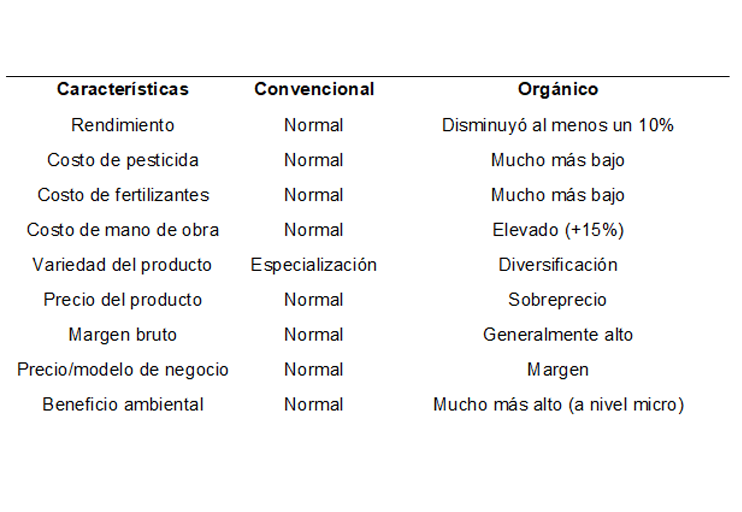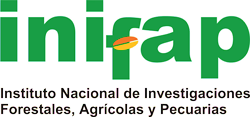Expectations for prices and production of organic vegetables: the case of Mexico
DOI:
https://doi.org/10.29312/remexca.v16i2.3396Keywords:
conventional products, organic products, price differentialAbstract
As the supply of organic products in the market increases, their price tends to decrease unless the demand for these products increases and consumers are willing to pay an additional price compared to the conventional product. This research aimed to measure the trend of the premium of organic vegetables over the conventional vegetables and to estimate the growth of the vegetable market based on the introduction or substitution of organic products by conventional ones in Mexico. For the calculations, continuous-time differential equations were used to estimate the production function and projections with series from 1990 to 2020 for conventional products and from 2015 to 2020 for organic products. The premium of organic products decreased over time with a tendency to equal that of conventional products. Asparagus, strawberry, and saladette tomato expanded the market with their entry, mainly the export market, because they had a greater competitive advantage. In contrast, broccoli, zucchini, romaine, pickle cucumber, and husk tomato did not expand the market, which means that they replaced the conventional product. It is concluded that the price differential of organic products decreases over time as it equals that of conventional products and highly competitive organic products expanded the market.
Downloads
References
Arce, Q. S. E. 2020. Análisis comparativos de precios y costos de producción de hortalizas cultivadas de manera orgánica y convencional. Agronomía costarricense. 44(2):81-108. http://dx.doi.org//0.15517/rac.v44i2.4309/.
Arias, H. A. 2015. Productos orgánicos en México. Centro de estudios para el desarrollo rural sustentable y soberanía alimentaria. Ciudad de México, México. 62 p. http://www.cedrssa.gob.mx/files/10/97Productos%20org%C3%A1nicos%20en%20M%C3%A9xico.pdf.
Camarena-Gómez, B. O.; Romero-Valenzuela, D. M y Camarena-Gómez, D. 2020. Alimentos orgánicos en Hermosillo, Sonora: disposición a pagar y preferencias del consumidor. Estudios sociales. Revista de alimentación contemporánea y desarrollo regional. 30(55):1-30. https://doi.org/10.24836/es.v30i55.877.
Conner, D. and Rangaran, A. 2009. Production cost of organic vegetable farms: two cases studies from Pennsylvania. Journal of the American Society for Horticulture Sciences. 19(1):193-199. https://doi.org/10.21273/hortsci.19.1.193.
Durham, T. C. and Tamás, M. 2021. Comparative economics of conventional, organic, and alternative agricultural production systems. Economies. 9(64):1-22. https://doi.org/10.3390/economies 9020064.
Escobar, H. 2003. Análisis de costos para hortalizas ecológicas. Cuadernos del Centro de Investigaciones y Asesorías Agroindustriales (CIAA). fundación universidad de Bogotá Jorge Tadeo Lozano. Bogotá, Colombia. 40 p. https://www.utadeo.edu.co/sites/tadeo/files/node/publication/field-attached-file/pdfanalisis-de-costos-para-hortalizas--pag--web-10-15.pdf.
Figueroa, H. E. y Espinosa, T. L. E. 2020. Análisis de la producción de pepino y pepinillos en México. In: diseminación de conocimientos descubrimientos y reflexiones. Academia Journals. Ed. Oaxaca, México, DF. 112-124 pp. http://hdl.handle.net/20.500.11799/109403.
FAO. 2023. Organización de las Naciones Unidas para la Alimentación y la Agricultura. Preguntas frecuentes sobre agricultura orgánica. Roma, Italia. https://www.fao.org/organicag/oa-faq/oa-faq5/es/.
Gandolfo, G. 2010. Economic dynamics. Springer. 4th Edition. Meppel, the Netherlands. 751 p.
Giraud-Héraud, E. and Louis-Georges, S. 2006. Retailer’s supply chain, product differentiation and quality standards. In: quantifying the agri-food supply chain. Ed. Springer Dordrecht. Primera edición. Wageningen, Netherlands. 67-83 pp.
Gómez, C. M.; Schwentesius R. R. y Gómez, T. L. 2011. Agricultura orgánica de México: datos básicos. Subsecretaría de Desarrollo Rural Centro de Investigaciones Económicas, Sociales y Tecnológicas de la Agroindustria y la Agricultura Mundial. Universidad Autónoma Chapingo (UACH). Texcoco, Estado de México. 25 p. https://ciestaam.edu.mx/material-de-divulgacion/agricultura-organica-mexico-datos-basicos/.
Hamm, U.; Aschemann-Witzel, J. and Riefer, A. 2007. Sind die hohen preise für Öko-Lebensmittel wirklich das zentrale problem für den Absatz? [Are the high prices for organic food really the main problem regarding sales?]. Berichte über Landwirtschaft, Zeitschrift für Agrarpolitik und Landwirtschaft. 85(2):252-271.
Hemmerling, S.; Hamm, U. and Spiller, A. 2015. Consumption behavior regarding organic from a marketing perspective a literature review. Organic agricultura. 5(4):277-313. https://link.springer.com/article/10.1007/s13165-015-0109-3.
Higuchi, A. 2015. Características de los consumidores de productos orgánicos y expansión de su oferta en Lima. Apuntes. 42(77):57-89. http://www.scielo.org.pe/scielo.php?pid=S025218652015000200002&script=sci-abstract.
INEGI. 2022. Instituto Nacional de Estadística y Geografía. Banco de Información Económica. Aguascalientes, Ciudad de México, México. https://www.inegi.org.mx/app/indicadores/?tm=0#D628194.
Jaime, M. R.; Hurtado, B. B. A. y Romero, V. N. G. 2015. La competitividad en la exportación de espárragos sonorense hacia Estados Unidos en el marco del TLCAN. Revista Mexicana de Agronegocios. 36:1265-1274. https://www.redalyc.org/pdf/141/14132408012.pdf.
Klonsky, K. 2011. Comparison of production cost and resources use for organic and conventional production systems. American Journal of Agricultural Economics. 94(2):314-321. https://doi.org/10.1093/ajae/aar102.
Krause, J. and Machek, O. 2018. A comparative analysis of organic and conventional farmers in the Czech Republic. Agricultural Economics. Czech. 64(1):1-8. Doi: 10.17221/161/2016-agricecon.
López, S. G. L. 2019. Factores que influyen en la compra de alimentos orgánicos en México: un análisis mixto. Small Business International Review. 3(2):69-85. https://doc.org/10.26784/sbir.v312.210.
MacRae, R. J.; Frick, B. and Martin, R. C. 2008. Economic and social impacts of organic production systems. Canadian Journal of Plant Science. 87(5):1037-1044. https://doi.org/10.4141/CJPS07135.
Marian, L.; Chrysochou, P.; Krystallis, A. and Thøgersen, J. 2014. The role of price as a product attribute in the organic food context: exploration based on actual purchase data. Food Quality and Preference. 37:52-60. Doi: http://dx.doi.org/10.1016/j.foodqual.2014.05.001.
Profeco. 2018. Procuraduría Federal del Consumidor. Quien es quien en los precios. Ciudad, de México. México. www.gob.mx/profeco>documentos.
Rocha, I. J. E. y Cisneros-Reyes, Y. D. 2019. La producción de brócoli en la actividad agroindustrial en México y su competitividad en el mercado internacional. Acta Universitaria. 29:1-13. https://doi.org/10.15174/au.2019.2156.
Schlatter, B.; Trávníek, J.; Lernoud, J. and Willer, H. 2020. Current statistics on organic agriculture worldwide: area, operators and market Ed. The world of organic agriculture. Statistics and emerging trends 2020. Research institute of organic agriculture (FiBL), Frick, and IFOAM-Organics International, Bonn. https://www.organic-world.net/yearbook/yearbook-2020.html.
Schwentesius, R. R.; Gómez, C. M. A.; Ortigoza, R. J. y Gómez, T. L. 2014. México orgánico. Situación y perspectivas. Agroecología. 9(1-2):7-15. https://revistas.um.es/agroecologia/article/view/300571/215851.
SIAP. 2022. Servicio de Información Agroalimentaria y Pesquera. Cierre Agrícola. Ciudad de México, México. https://nube.siap.gob.mx/cierreagricola/.
Soto, G. 2020. El continuo crecimiento de la agricultura orgánica: orgánico 3.0. Revista de Ciencias Ambientales. 54(1):215-226. https://doi.org/10.15359/rca.54-1.13.
Willer, H. and Lernoud, J. 2019. The world of organic agriculture statistics and emerging trends 2019. Research Institute of Organic Agriculture FiBL-IFOAM-Organics International. 226-228 p. https://orgprints.org/id/eprint/37018/1/lernoud-lernoud-2019-world-of-organic-low.pdf.

Published
How to Cite
Issue
Section
License
Copyright (c) 2025 Revista Mexicana de Ciencias Agrícolas

This work is licensed under a Creative Commons Attribution-NonCommercial 4.0 International License.
The authors who publish in Revista Mexicana de Ciencias Agrícolas accept the following conditions:
In accordance with copyright laws, Revista Mexicana de Ciencias Agrícolas recognizes and respects the authors’ moral right and ownership of property rights which will be transferred to the journal for dissemination in open access. Invariably, all the authors have to sign a letter of transfer of property rights and of originality of the article to Instituto Nacional de Investigaciones Forestales, Agrícolas y Pecuarias (INIFAP) [National Institute of Forestry, Agricultural and Livestock Research]. The author(s) must pay a fee for the reception of articles before proceeding to editorial review.
All the texts published by Revista Mexicana de Ciencias Agrícolas —with no exception— are distributed under a Creative Commons License Attribution-NonCommercial 4.0 International (CC BY-NC 4.0), which allows third parties to use the publication as long as the work’s authorship and its first publication in this journal are mentioned.
The author(s) can enter into independent and additional contractual agreements for the nonexclusive distribution of the version of the article published in Revista Mexicana de Ciencias Agrícolas (for example include it into an institutional repository or publish it in a book) as long as it is clearly and explicitly indicated that the work was published for the first time in Revista Mexicana de Ciencias Agrícolas.
For all the above, the authors shall send the Letter-transfer of Property Rights for the first publication duly filled in and signed by the author(s). This form must be sent as a PDF file to: revista_atm@yahoo.com.mx; cienciasagricola@inifap.gob.mx; remexca2017@gmail.
This work is licensed under a Creative Commons Attribution-Noncommercial 4.0 International license.


